Flashcards on LITERATURA INGLESA, created by ethgar_172 on 19/06/2015.
Pinned to
47
3
0
No tags specified
|
|
Created by ethgar_172
over 9 years ago
|
|
Close
|
|
Created by ethgar_172
over 9 years ago
|
|

END VII Century
BEGINNING VIII Century
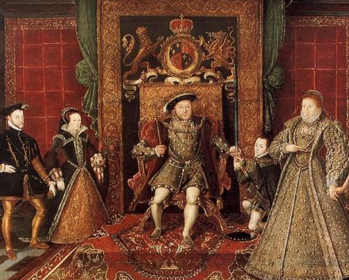
King Arthur & The Knights of the Round Table XIV Century
The Round Table is King Arthur's famed table in the Arthurian legend, around which he and his Knights congregate. As its name suggests, it has no head, implying that everyone who sits there has equal status. The table was first described in 1155 by Wace, who relied on previous depictions of Arthur's fabulous retinue. The symbolism of the Round Table developed over time; by the close of the 12th century it had come to represent the chivalric order associated with Arthur's court, the Knights of the Round Table.
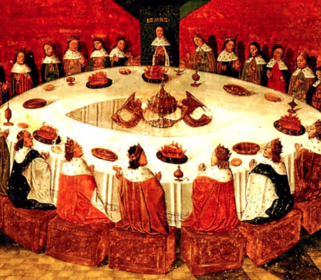
Geoffrey Chaucer
1343 - 1400
Author, poet, philosopher,bureaucrat, diplomat.
Born in London in 1343, Died October 25th 1400. He fought for England in the Hundred Years' War
Known as the father of English vernacular literature. Is the first poet to be buried in Westminster Abbey's Poets Corner.
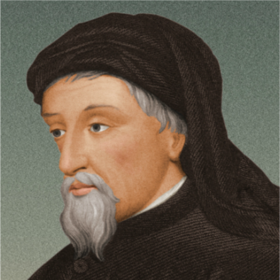
Christopher Marlowe
1564-1593
Was a playwright, poet and a translator from Britain. Worked and published during the Elizabethan Era. He caused a lot of controversy during and after his lifetime. Is considered to be the most popular playwright of the Elizabethan Era (next to Shakespeare). He was a free thinker and atheist, that did not make life easy for him in the time of Renaissance. He was even arrested and courted for his interests in new technologies and atheism. He worked as a kind of agent for the government and the Queen Elizabeth I.
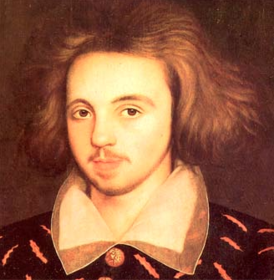
William Shakespeare
1564-1616
He was born and brought up in Stratford-upon-Avon. He was an English poet, playwright, and actor, widely regarded as the greatest writer in the English language and the world's pre-eminent dramatist. His extant works, including some collaborations, consist of around 38 plays, 154 sonnets, two long narrative poems, and a few other verses, of which the authorship of some is uncertain. Shakespeare's first plays were written in the conventional style of the day. The poetry depends on extended, sometimes elaborate metaphors and conceits, and the language is often rhetorical.
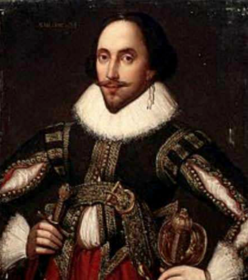
John Milton
1608-1679
John Milton was an English poet, regarded by many critics as the "greatest English author", best known for his epic poem ``Paradise lost``. Milton used BLANK VERSE, also known as ``Miltonic verse`` because of its later wide usage in poetry by many poets inspired by Milton. ( characteristics of blank verse). He also introduced some new stylistic elements such as grandiloquence of voice and vision, bombastic verse ,peculiar diction and phraseology. Lack of rhyme is also very much present .Milton regarded this as his personal freedom-in contrast with rigid heroic couplet- examples of these in presented extracts.
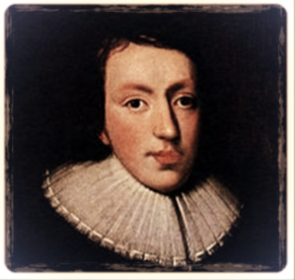
Samuel Johnson
1709-1784
Was a poet, writer, lexicographer, and biographer.
He was described as "the best-read man" most of his education came from readings. Johnson grew up in a bookstore his father owned. Attended Lichfield Grammar School where he learned Latin & Greek. Johnson excelled in his studies and was promoted to advance education.
“What is written without effort is in general read without pleasure.”
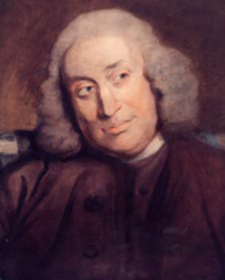
William Blake
1757-1827
William Blake was an English poet, printer print maker. He was head of old England romantic poems who was not recognized during his lifetime for his work it was right before he passed away that he had gotten a small fan base. His prophetic poetry has been said to form "what is in proportion to its merits the least read body of poetry in the English language". His visual artistry led one contemporary art critic to proclaim him "far and away the greatest artist Britain has ever produced".
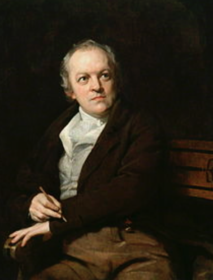
Lord Byron
1770-1850
Lord Byron, was an English poet and a leading figure in the Romantic movement. Among Byron's best-known works are the lengthy narrative poems Don Juan and Childe Harold's Pilgrimage and the short lyric She Walks in Beauty. He is regarded as one of the greatest British poets and remains widely read and influential. Love for cousin Margret inspired him to start poetry. One of the leaders of poetic revolution who created the Romantic Hero "Byronic Hero" defiant, melancholy, haunted by secret guilt some say it was a reflection of him.
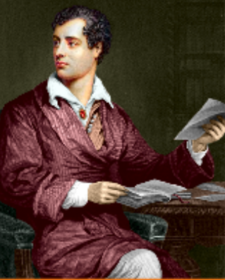
Charles John Huffam Dickens
1812-1870
Charles Dickens was an English writer and Social critic. Following his father’s imprisonment, Charles Dickens was forced to leave school to work at a boot-blacking factory.It was the best he could do to help support his family.
He felt abandoned and betrayed by the adults who were supposed to take care of him. These sentiments became a recurring theme in his writing.
Much to his relief, Dickens was permitted to go back to school when his father received a family inheritance and used it to pay off his debts.
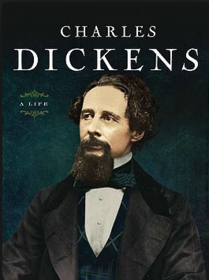
Charles Lutwidge Dodgson
1832-1898
Lewis Carroll was an English author, mathematician, logician, Anglican clergyman, and photographer. Photographed children in every possible costume and situation, ultimately making nude studies of them.
Just before his 66th birthday, Lewis Carroll caught a severe case of influenza, which led to pneumonia , and he died on January 14, 1898.
Known for using: literary nonsense, word play, fantasy, and logic
Classics:
Alice's Adventures in Wonderland
Through the Looking-Glass
Poems:
The Hunting of the Snark
Jabberwocky
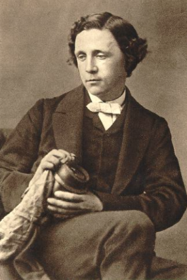
William Morris
1834-1896
Known for creating wallpaper and textile designs. His themes and inpiration included medievalism and nature and his designs are all old fashioned and traditional. His target market were superior wealthy, upper class people in the 1860's
Morris & Co 1861
The Arts and Crafts Movement he led in England spread worldwide
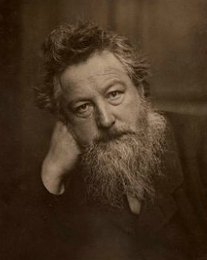
END OF XIX CENTURY
Robert Louis Stevenson
1850-1894
He worked on several genres, he wrote novels, short stories, poetry, travel writings, as well as plays, biography and he also composed music for flageolet. Stevenson traveled often, and his global wanderings lent themselves well to his brand of fiction. Stevenson developed a desire to write early in life, having no interest in the family business of lighthouse engineering. He was often abroad, usually for health reasons, and his journeys led to some of his early literary works.
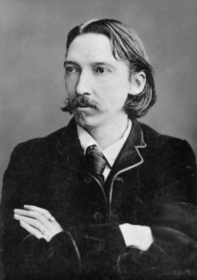
Oscar Fingal O'Flahertie Wills Wilde
1854-1900
Wilde established himself as a leading proponent of the aesthetic movement, a theory of art and literature that emphasized the pursuit of beauty for its own sake, rather than to promote any political or social viewpoint.
Traveled through most of England to promote aestheticism, and toured the US to spread the movement. Wrote stories, poems, and plays that had to deal with the physical beauty of things, materialism, and his thoughts on pleasure. Was presumed to be homosexual by many sources, stated to have had an intimate relationship with Alfred Douglas.

Sir Arthur Ignatius Conan Doyle KStJ
1859-1930
He was a Scottish writer and physician, most noted for his fictional stories about the detective Sherlock Holmes, which are generally considered milestones in the field of crime fiction.
He is also known for writing the fictional adventures of a second character he invented, Professor Challenger, and for popularising the mystery of the Mary Celeste. He was a prolific writer whose other works include fantasy and science fiction stories, plays, romances, poetry, non-fiction and historical novels.
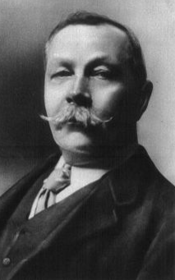
Virginia Woolf
1882-1941
First professional writing was for the Times Literary Supplement. First published novel was The Voyage Out (1915).Considered one of the leading modernists and innovator of the English language. She played with the psychological and emotional motives of her characters. Had a reputation as an anti-Semite, non-Christian, and both she and her husband feared the oncoming fascism of the 1930s.
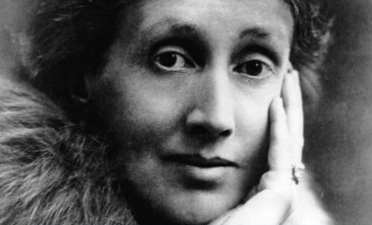
James Augustine Aloysius Joyce
1882-1941
James Joyce has been praised as innovative, influential, and brilliant, among other things. Although he traveled a lot after college, his novels did not leave the setting of Dublin. James says this is because “For myself, I always write about Dublin, because if I can get to the heart of Dublin I can get to the heart of all the cities of the world. In the particular is contained the universal.” He believes that understanding this one particular place gives him a connection to those around the world because many struggles and joys of life are universal.
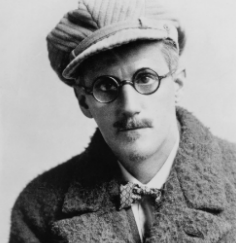

 Hide known cards
Hide known cards